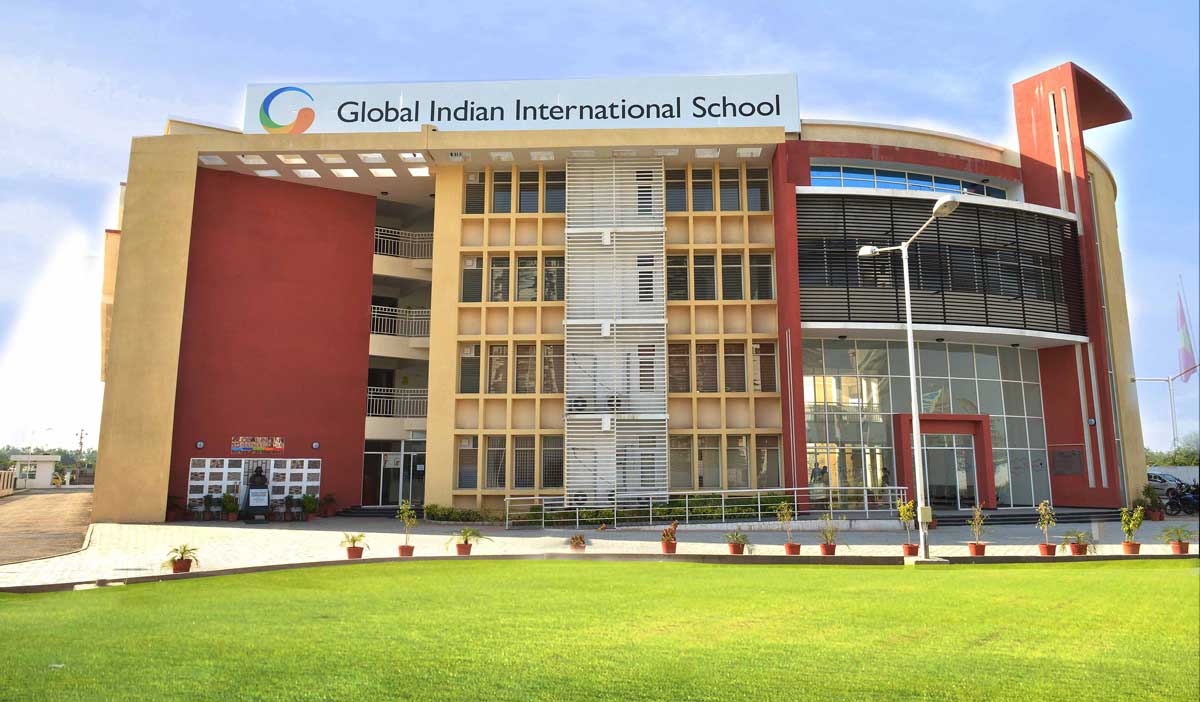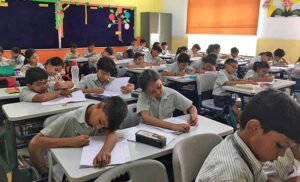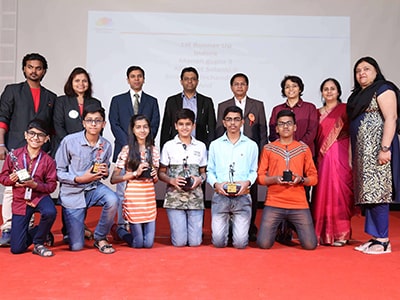Download our FREE Academic Calendar now! 📚 Start your child’s journey to success.
It is very pleasing news that the Gujarat Government has worked consistently in the last few years to improve its standard of education to meet the needs of a global education community. There has been focus on enhancing the quality of education and schools are actively revamping their frameworks in order to create an engaging learning environment for all its students. There have been new innovative measures taken to upgrade teaching methods and new training material has been introduced to help teachers handle smart classrooms and virtual labs. Schools in Gujarat have been revamped to build new platforms where digitization is the core of the classroom and there are new programmes across international platforms that help these students exchange their ideas and skills. The CBSE curriculum has seen a tremendous amount of growth and teachers have adapted to more engaging and collaborative ways of teaching to accelerate the learning process.
What is CBSE?
The Central Board of Secondary Education is by far the most popular curriculum in India and it is gaining importance on international turfs too. With strong emphasis on core subjects, the CBSE curriculum in high school is designed in such a way that students are prepared not just for their class exams but other competitive exams like IIT-JEE and AIIMS etc. The CBSE follows the guidelines of the NCERT ( National Council of Educational Research and Training) and this allows for a common platform among all CBSE schools. NCERT has harmoniously strived to improve the quality of education in Indian schools and its textbooks are widely used by most of these schools as a first point of reference for its students. There are other entrance exams like the IAS/IFS that follow the textbooks of NCERT and this can help students gain familiarity with the nature of these exams in general. The CBSE curriculum is spreading its academic wings not just in India but other parts of Asia like Singapore, Malaysia, Japan, UAE and other countries too.
How is it different from other curriculums?
Difference between state and CBSE: The CBSE definitely wins over the state board because it is a national curriculum that is accepted by almost all schools in India and abroad. The CBSE is a more robust curriculum that covers a vast range of topics in core subjects and its aim is to help students get a strong foundation on these subjects in order to pursue higher professional courses with ease. The CBSE curriculum does not only depend on the textbook content but is absorbed by students by learning the core concepts through many experiments, research and self- derived ideas.
Difference between CBSE and IGCSE: While the CBSE follows the NCERT curriculum, the IGCSE follows the Cambridge university curriculum. CBSE is the ideal curriculum for Indian students as most of them prefer pursuing professional courses like Engineering and Medicine. Though there are more subject options available for students who follow IGCSE curriculum, in a CBSE setup the emphasis is on core subjects like Science and Maths as these are the subjects that need a very strong foundation for higher studies in the same line. The CBSE board conducts the secondary 10th and 12th grade exams while the IGSCE conducts the Cambridge secondary 1 and 2 exams and both are similar levels of education.
Advantages of CBSE in High School?
Since the CBSE is a standardized board of education, it is often very convenient for children to enrol in different schools across the country. Even Indian International schools abroad offer the CBSE curriculum apart from other curricula like IGCSE and IB and this can be an added advantage to students who want to pursue the same curricula as of their home turf but in an international environment. And as mentioned earlier, the CBSE prepares a student to appear in the entrance exams of top colleges and universities for professional courses. CBSE is also more affordable when compared to curricula like IGCSE and IB and this is a really important point because CBSE is just as competitive as other international boards, if not more.
And since CBSE schools in Gujarat have taken big steps in reforming the way it imbibes education to its students by using latest technology and innovations in education, high schools with a CBSE curriculum can be the best choice for students.
Is the CBSE curriculum enough for all-round development?
This is another important question that is asked by most parents of high school students. However, it is important to understand that schools in India have changed and are adapting to new ways of teaching and are also working on making all schools a platform where students do not just learn academics but also develop their overall personality by participating in extracurricular activities and co curricular activities.
Holistic education: Holistic education is the new norm in most international high schools in India and schools have proactively changed their approach from traditional methods of teaching to that of more advanced methods where there is active participation between the teachers and students. Most good schools have created their own framework along with the CBSE curriculum to provide that extra edge and boost students to help them become competitive and also enhance their overall development.
High schools in Gujarat have turned a new page to be at par with the world standard of education and some of the best schools understand the significance of this change. It is very gladdening to see that these schools harbor the best interests of their students and also understand the aspect of affordability by providing an international level of education at an affordable fee and scholarships. Holistic education being the main vision, there are award winning frame-works that schools have adapted to, in order to produce leaders and visionaries among its students.





































